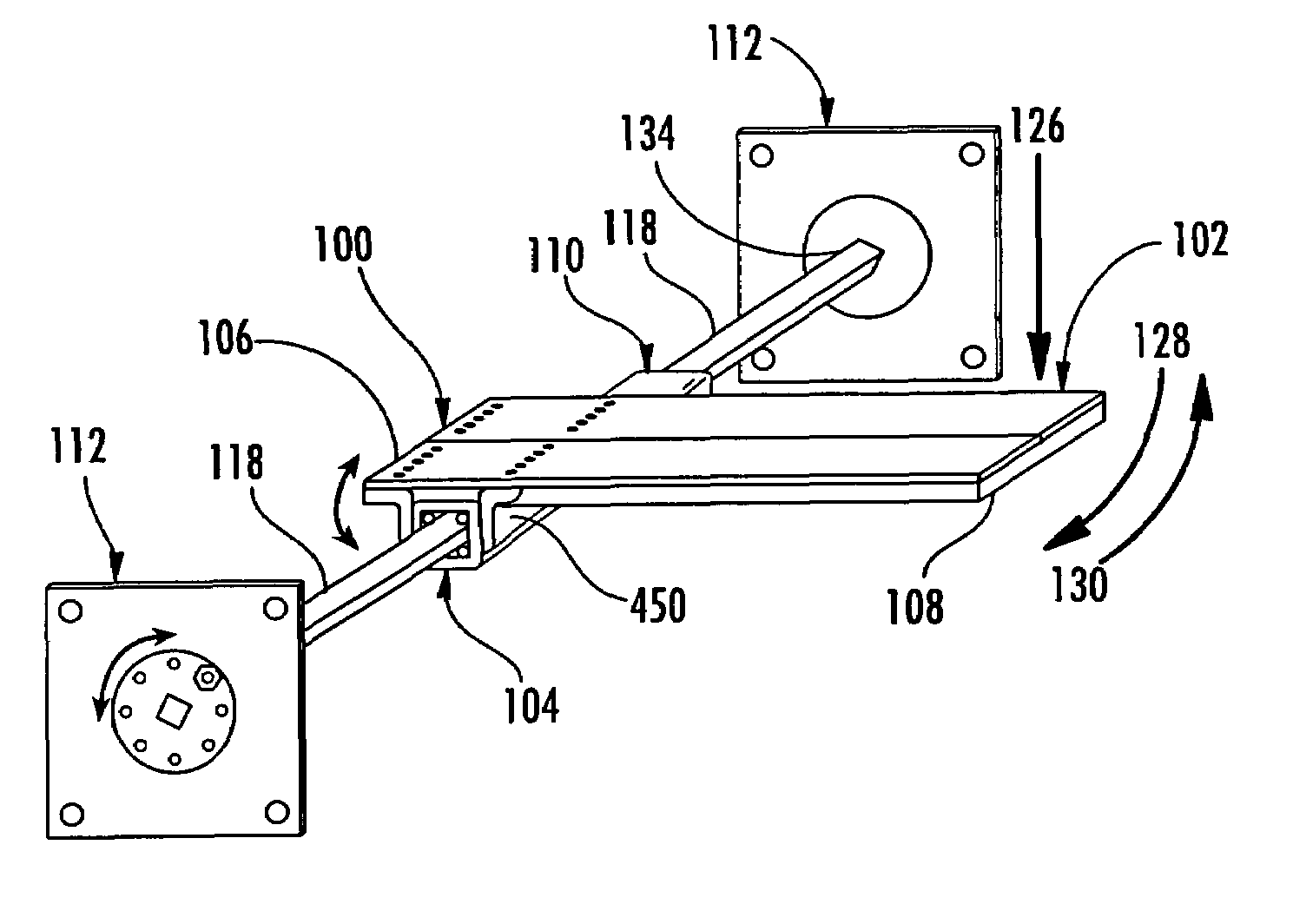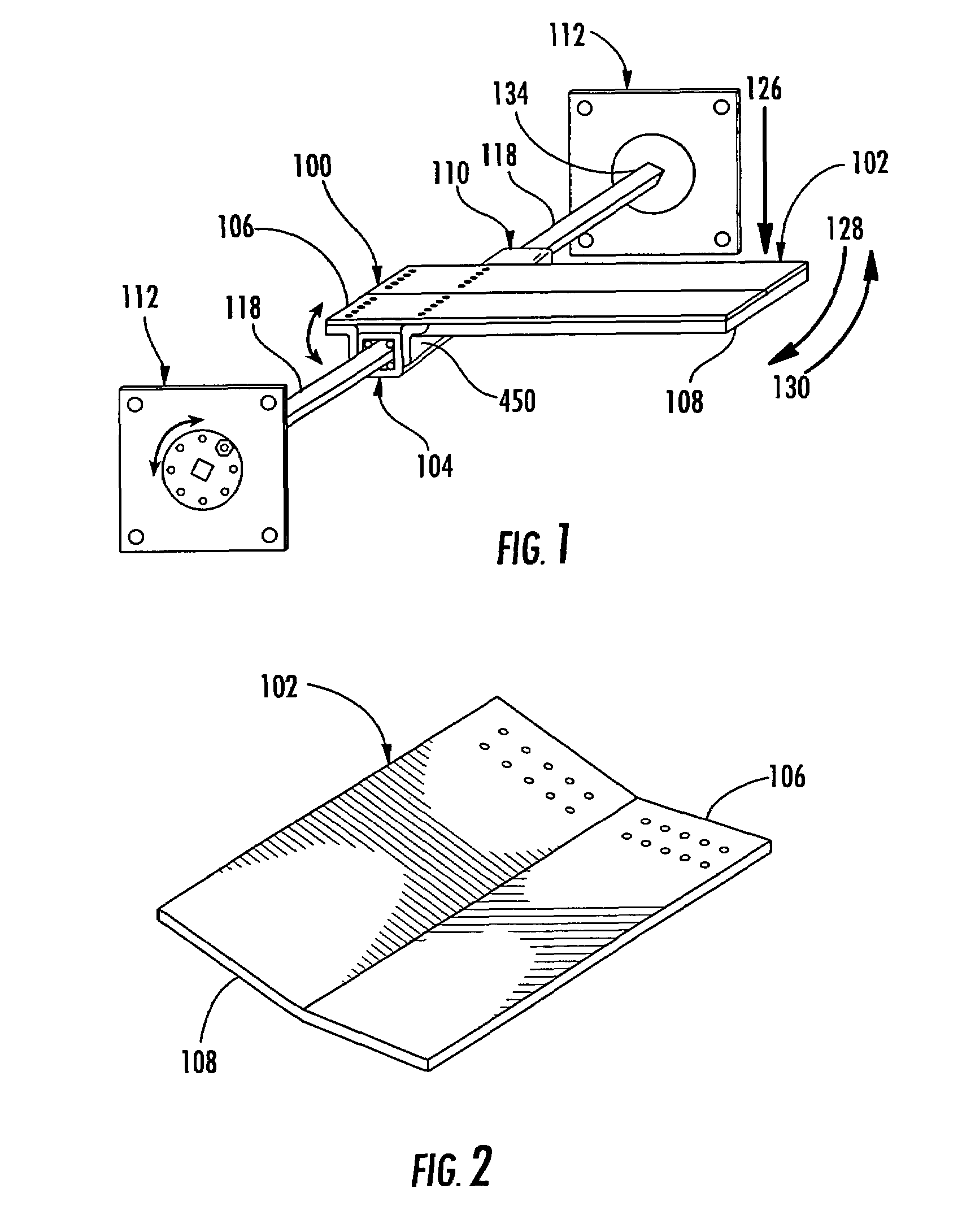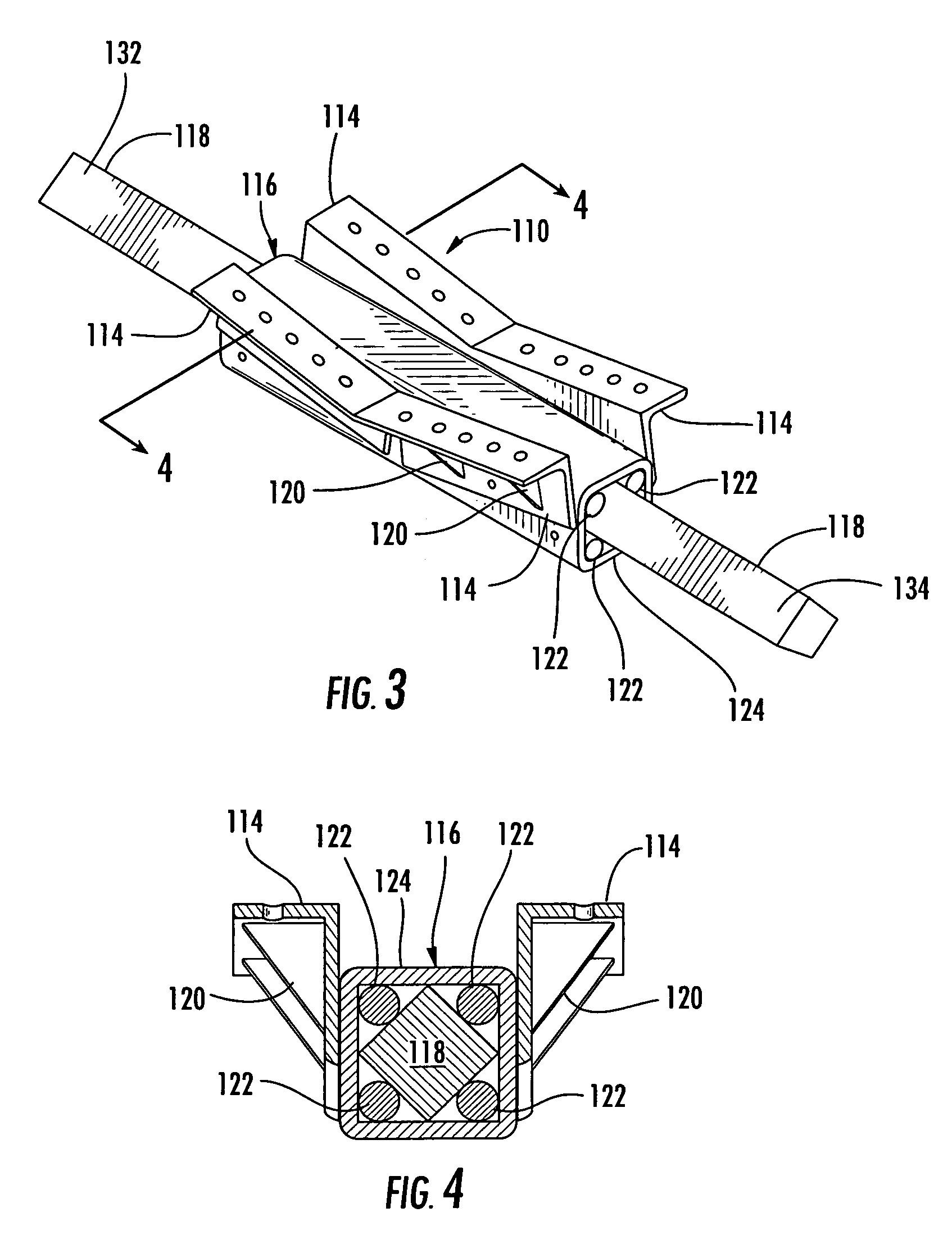Method and apparatus for diverting material
a material and method technology, applied in the direction of mechanical conveyors, rolling carriages, loading/unloading, etc., can solve the problems of material falling off the second conveyor belt, damage to the conveyor belt surface, cuts and/or holes in the conveyor belt surface, etc., to reduce material spillage, reduce impact damage to the conveyor belt, and convenient, adaptable, and effective
- Summary
- Abstract
- Description
- Claims
- Application Information
AI Technical Summary
Benefits of technology
Problems solved by technology
Method used
Image
Examples
Embodiment Construction
[0036]As shown in FIG. 1, the flow control apparatus 100 comprises a diverter plate 102 attached to a mounting assembly 104. The diverter plate 102 has a top end 106 and a bottom end 108. The diverter plate 102 has a flat or planar rectangular shape, a V-shape with a trough along the midline of the length of the diverter plate 102, a concave shape with a trough along the length of the diverter plate 102, or a similar shape that facilitates a flow of conveyed material along the length of the diverter plate 102 such as U-shaped, cup shaped, or spoon shaped. The diverter plate 102 may also have vertical sides. One embodiment of the diverter plate 102 as shown in FIG. 2 comprises a rectangular stainless steel plate with a thickness of about one-half of an inch, a width of about twenty-four inches, a length of about thirty inches, and a V-shaped trough along the midline of the length of the diverter plate 102 having an internal angle of about one hundred sixty-one degrees. The diverter p...
PUM
 Login to View More
Login to View More Abstract
Description
Claims
Application Information
 Login to View More
Login to View More - R&D
- Intellectual Property
- Life Sciences
- Materials
- Tech Scout
- Unparalleled Data Quality
- Higher Quality Content
- 60% Fewer Hallucinations
Browse by: Latest US Patents, China's latest patents, Technical Efficacy Thesaurus, Application Domain, Technology Topic, Popular Technical Reports.
© 2025 PatSnap. All rights reserved.Legal|Privacy policy|Modern Slavery Act Transparency Statement|Sitemap|About US| Contact US: help@patsnap.com



